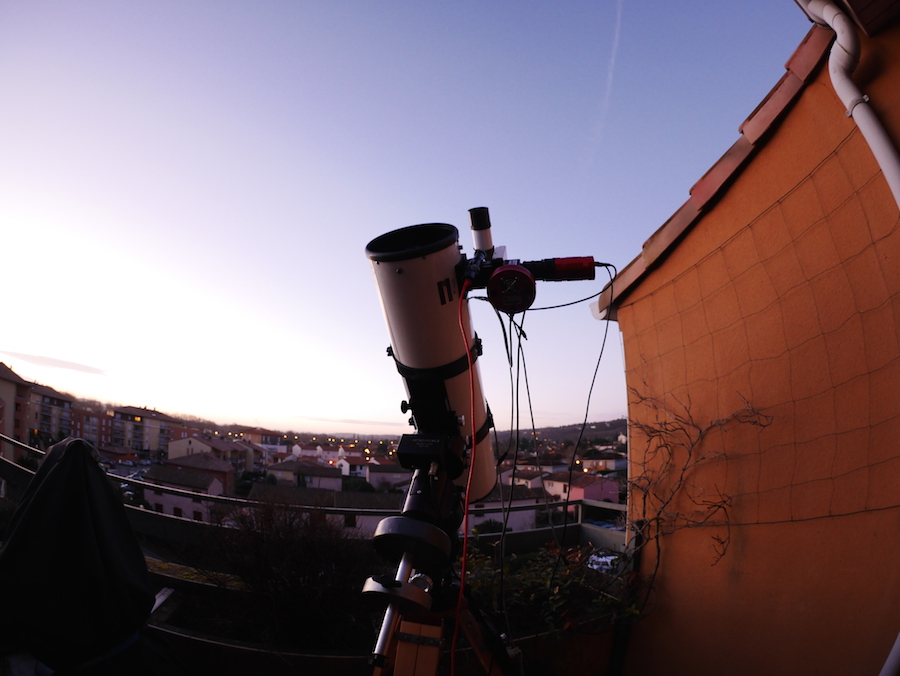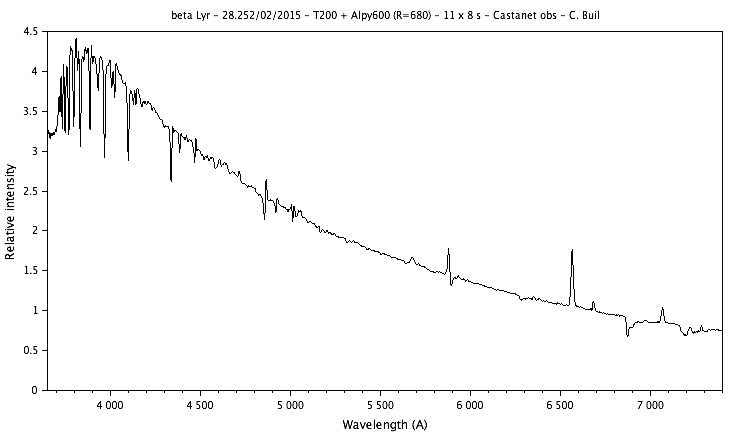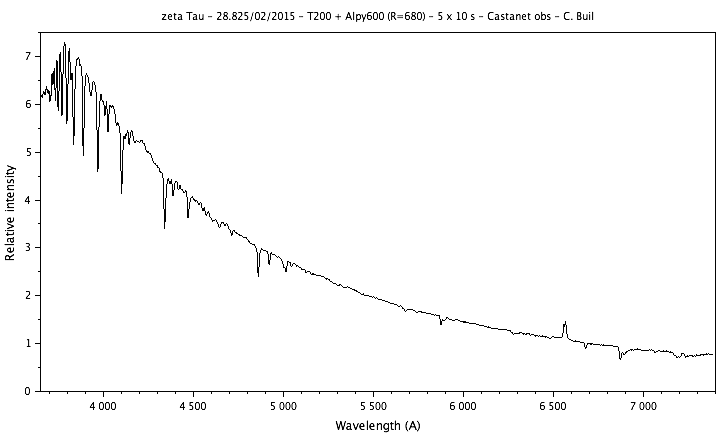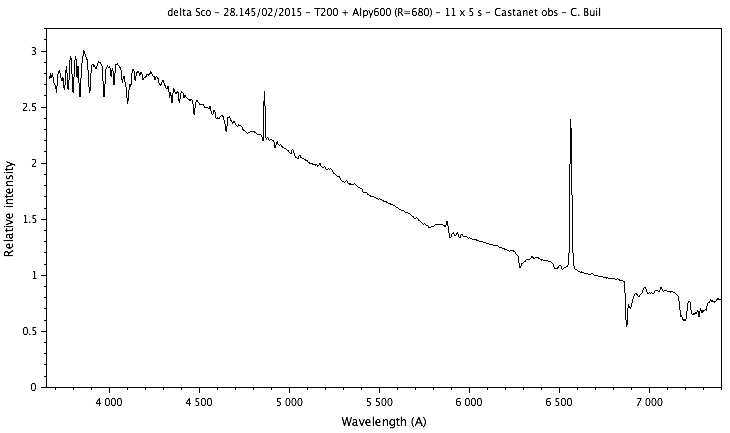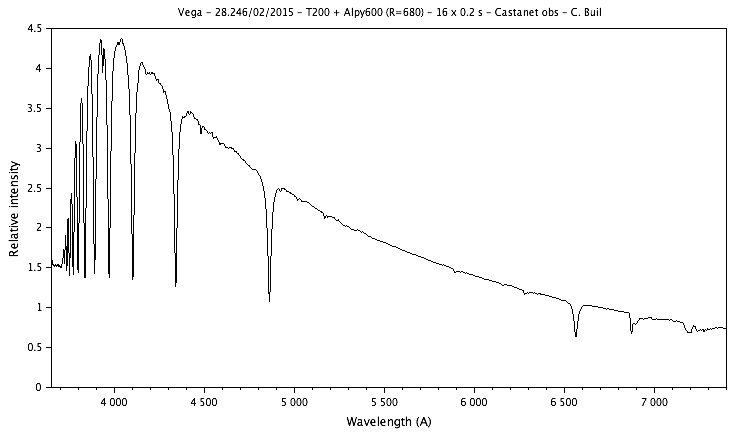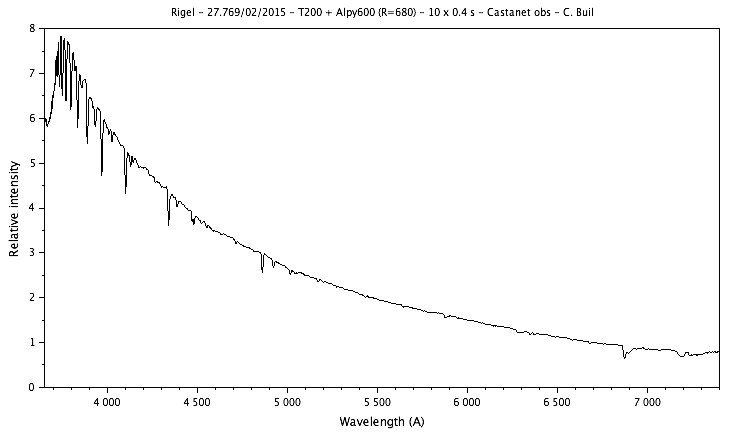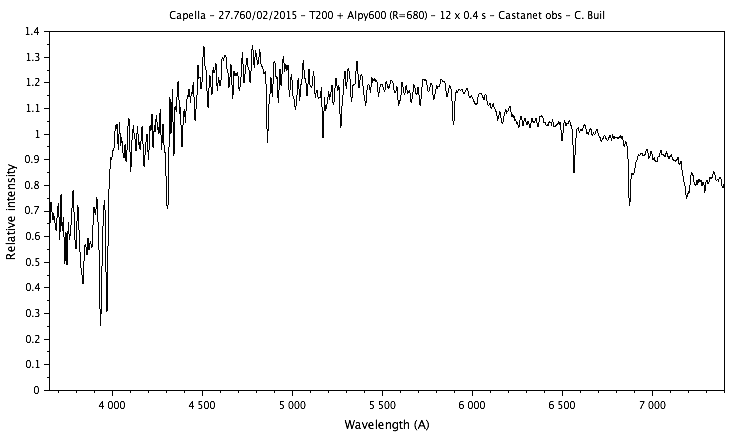Olivier, exact, no so clear. Here a detail of my Alpy600 spectrum compared to CALSPEC (see ISIS data base):
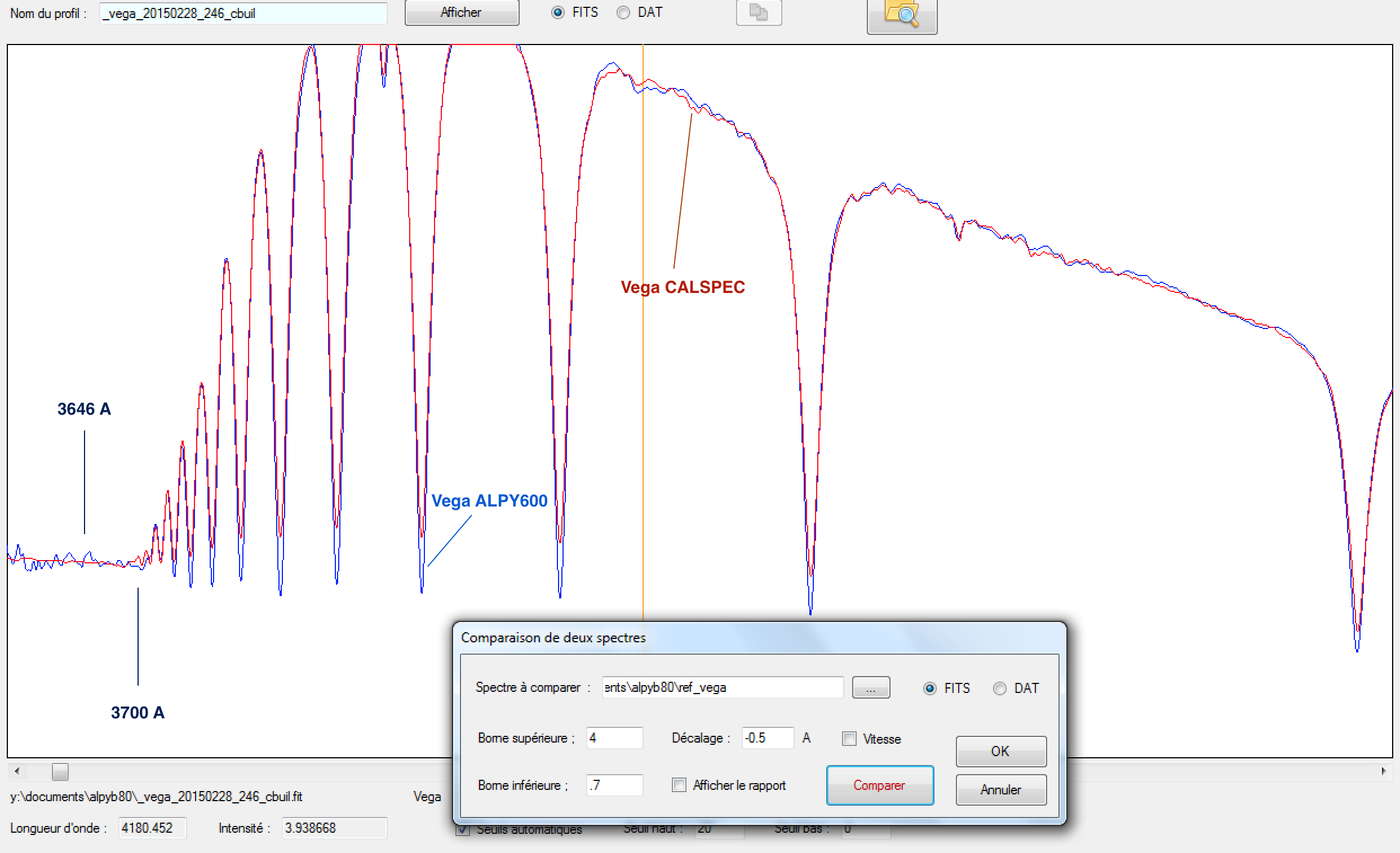
The optical quality of Aply600 is good down to 4700 A. For shorter wavelength some chromatism seem visible (of course, the telescope is perfect).
But on
Capella spectrum (a UV rich spectrum) the Alpy600 spectral resolution seem correct down to Balmer limit (3646 A) (the resolution of MILES spectrum is adapted to Alpy600 resolution):
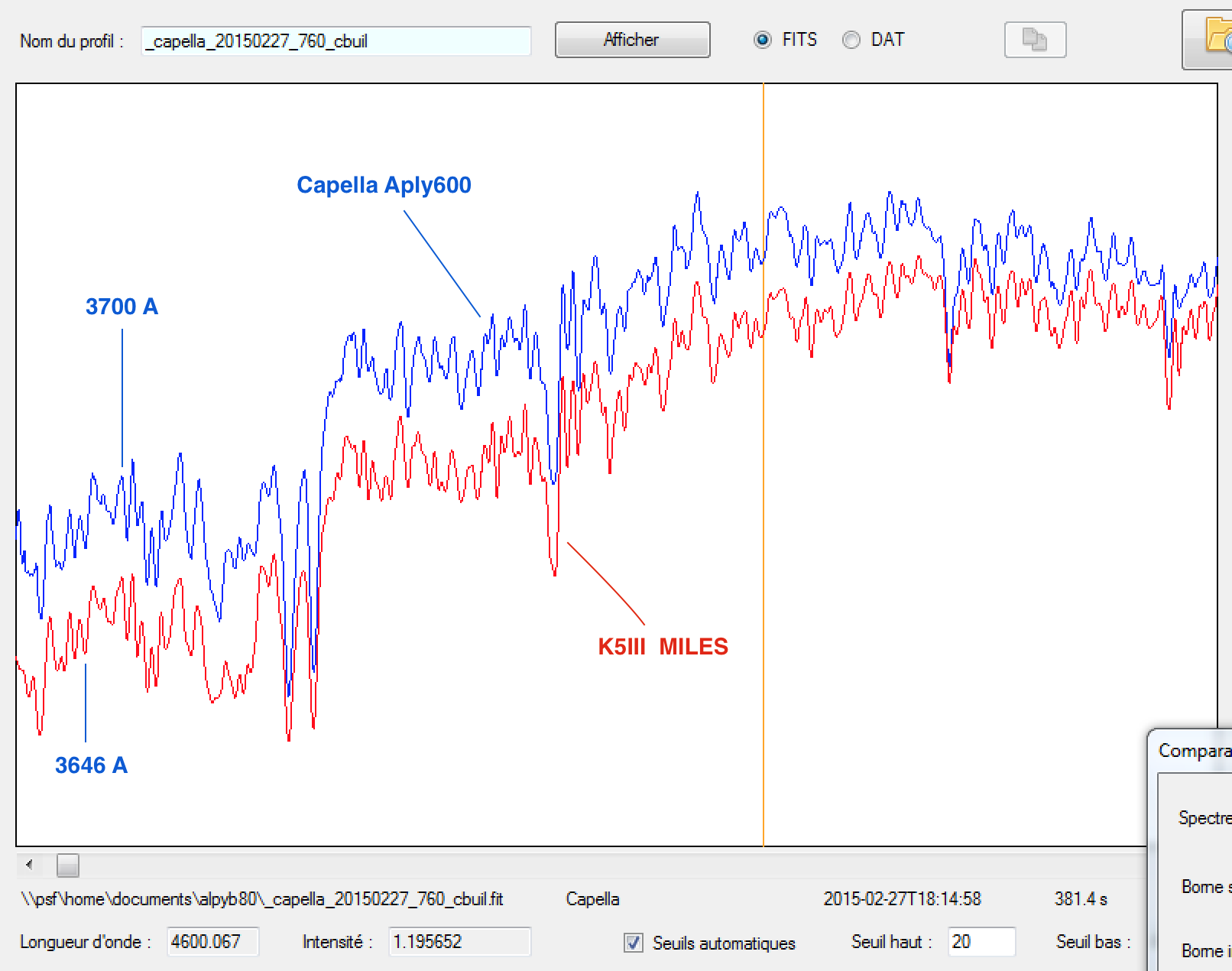
Christian
